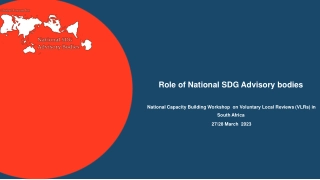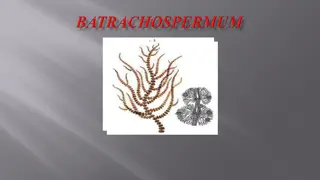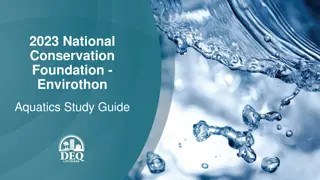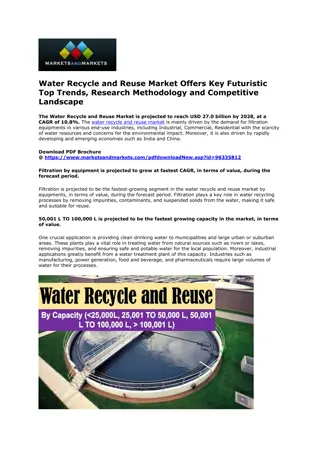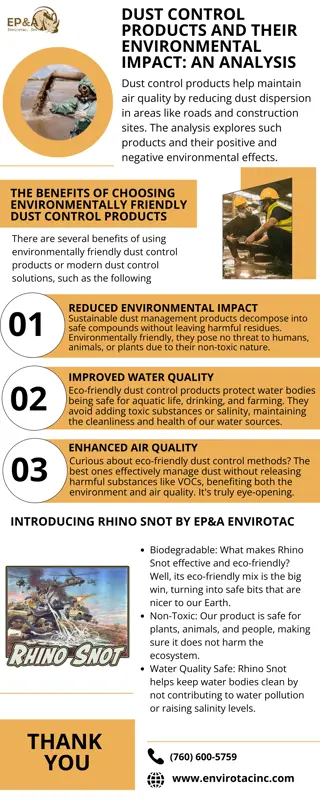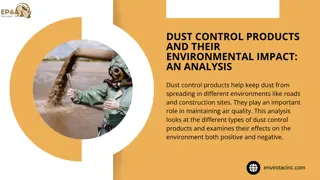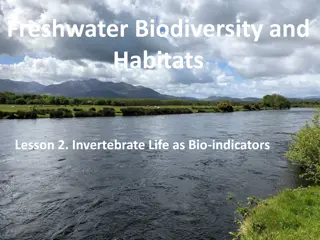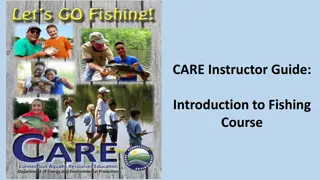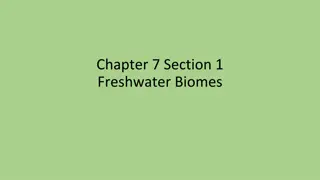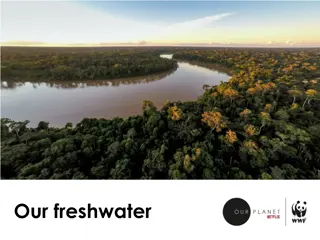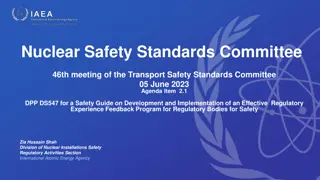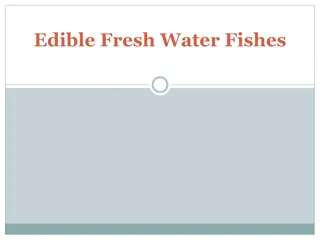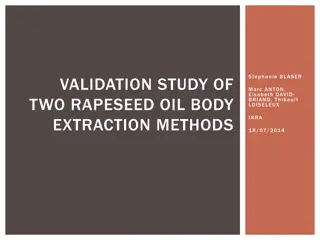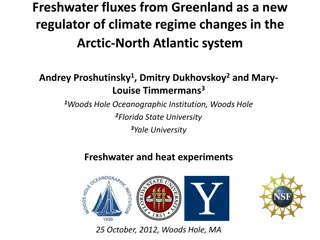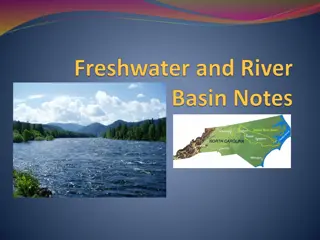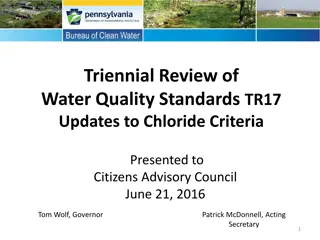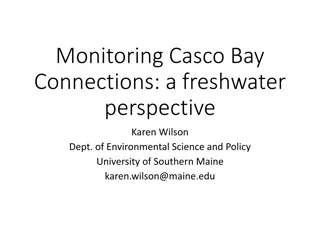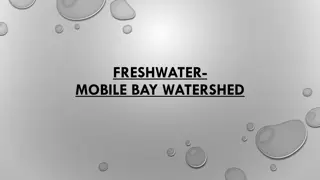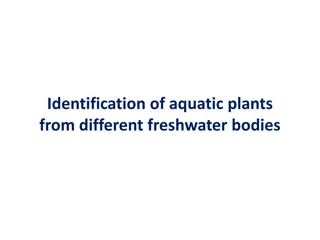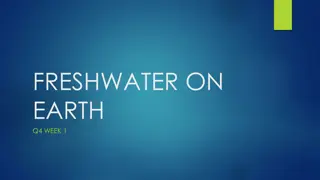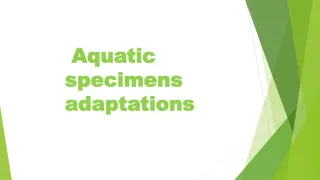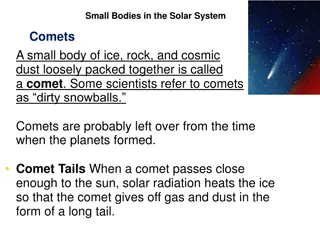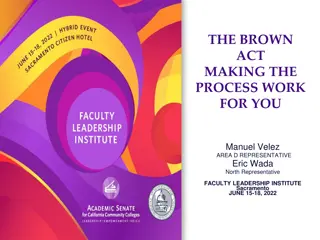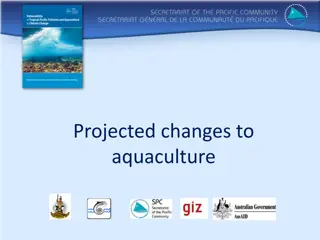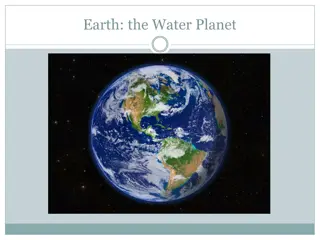Understanding Ecosystems: Types, Components, and Interactions
Different types of ecosystems, their components, and how they interact with each other. Explore natural ecosystems, such as deserts and rainforests, as well as artificial ecosystems. Discover the importance of terrestrial, aquatic, forest, marine, freshwater, tundra, and grassland ecosystems.
3 views • 6 slides
Role of National SDG Advisory bodies
Explore the evolution and importance of national SDG advisory bodies in advancing sustainable development goals, focusing on multi-stakeholder partnerships and global cooperation. Learn how these bodies play a crucial role in mobilizing resources and knowledge to support the achievement of SDGs.
0 views • 22 slides
Understanding Batrachospermum: A Freshwater Red Alga
Batrachospermum, a red alga commonly found in freshwater habitats like streams, ponds, and lakes, is characterized by its beautiful, gelatinous thallus structure. The plant body grows up to 15-20 cm and exhibits varying colors based on light exposure. Its thallus is differentiated into prostrate and
3 views • 17 slides
2023 National Conservation Foundation - Envirothon
Explore the intricate dynamics of aquatic ecosystems and wetlands conservation through this comprehensive study guide. Discover the importance of watersheds, the hydrologic cycle, aquatic food webs, energy flow at trophic levels, and common macroinvertebrates in Louisiana. Learn about different wetl
3 views • 27 slides
The Large Lakes Observatory and The Science of Freshwater Inland Seas
The Large Lakes Observatory (LLO) at the University of Minnesota Duluth is a leading academic program focused on limnology, oceanography, and research dedicated to inland seas. LLO's unique focus on oceanographic research methods applied to large lakes worldwide is supported by the Blue Heron resear
9 views • 28 slides
Understanding Fish Ecology: Interactions, Diversity, and Environmental Factors
Fish ecology involves studying the distribution, interactions, and abundance of fish species in different ecosystems. This lab delves into the divisions of ecology, fish species diversity in marine and freshwater ecosystems, and the environmental factors affecting fish diversity and abundance. Disco
1 views • 7 slides
Sustainable Solutions: Exploring the Water Recycle and Reuse Market
The water recycle and reuse market is projected to reach USD 27.0 billion by 2028, at a CAGR of 10.8% from USD 16.1 billion in 2023. The market growth is driven by factors such as the use of equipments like filtration, Machinery and the increasing demand for the use of water recyle due to the limite
0 views • 5 slides
Dust Control Products and Their Environmental Impact: An Analysis
In the battle against dust, dust control products have become commonplace. However, the environmental consequences of these seemingly innocuous solutions often go unnoticed. Due to high chloride concentrations leaching into our environment, salinization remains a serious threat to North American fre
0 views • 1 slides
Dust Control Products and Their Environmental Impact: An Analysis
In the battle against dust, dust control products have become commonplace. However, the environmental consequences of these seemingly innocuous solutions often go unnoticed. Due to high chloride concentrations leaching into our environment, salinization remains a serious threat to North American fre
0 views • 9 slides
Understanding Freshwater Biodiversity: Invertebrate Bio-indicators
Explore how invertebrates like stoneflies, mayflies, and caddisflies can be used as bio-indicators to determine water quality in freshwater habitats. Each species has specific environmental requirements, making their presence or absence a valuable tool for assessing the health of freshwater ecosyste
0 views • 16 slides
Introduction to Fishing Course: CARE Instructor Guide
Welcome to the CARE Instructor Guide for the Introduction to Fishing Course. This course covers topics such as rod and reel setup, tackle, knots, rules and regulations, fish identification, ecology, baits, care of catch, and casting. Learn about the CARE program, funded through Sport Fish Restoratio
1 views • 15 slides
Understanding Equilibrium in Rigid Bodies
Explore the concept of equilibrium in rigid bodies through problem-solving scenarios involving forces, moments, and tensions. Learn how to ensure balance and stability in resting bodies by analyzing forces and moments. Diagrams and step-by-step calculations help in understanding the physics behind e
0 views • 6 slides
Exploring Freshwater Ecosystems: Lakes, Ponds, and More
Freshwater ecosystems offer a diverse range of habitats, from lakes and ponds to wetlands and rivers. These ecosystems host a variety of organisms adapted to different zones based on factors like sunlight and nutrients. Plankton, nekton, and benthos are key aquatic groups, with unique roles in the e
0 views • 24 slides
Exploring Our Freshwater Ecosystems and Taking Action for Conservation
Discover the beauty of our freshwater ecosystems through stunning images of rivers, lakes, and wildlife. Learn about the challenges threatening these vital resources, such as overuse, pollution, and dam constructions. Find out how we can make a difference by using water efficiently, preventing pollu
1 views • 9 slides
Official Languages (Amendment) Act 2021: Advertising Obligations for Public Bodies
The Official Languages (Amendment) Act 2021 strengthens language rights for Irish speakers with provisions for public bodies to use Irish language in advertising. From December 2021, public bodies must ensure a minimum of 20% of advertising is in Irish, with 5% spent on Irish language media. These o
0 views • 46 slides
Developing an Effective Regulatory Experience Feedback Program for Safety: A Guide for Regulatory Bodies
This Safety Guide aims to assist regulatory bodies in managing regulatory experience by identifying sources, establishing means for information exchange, and implementing record-keeping processes. It addresses the need for cooperation and knowledge sharing among regulatory bodies to enhance safety s
1 views • 9 slides
SRAP Markers: Feasible Tool for Invasion Genetics of Freshwater Fish
Molecular tools, like Sequence-Related Amplified Polymorphism (SRAP) markers, play a crucial role in studying invasion genetics of freshwater fish. SRAPs offer a reliable and efficient way to assess genetic diversity and variations in non-native species, aiding in population genetics studies of inva
1 views • 5 slides
Freshwater Edible Fishes: A Culinary Delight
Freshwater fishes are a valuable food source in tropical regions. With high protein content, essential nutrients, and great taste, popular varieties like Labeo Rohita, Catla Catla, and Cirrhinus Mrigala offer a delicious and nutritious culinary experience. Learn about their characteristics, breeding
0 views • 31 slides
Understanding Judicial Review in Suing Public Authorities
Judicial review is the inherent right of courts to review decision-making processes of public bodies. It allows for challenging and analyzing decisions, granting public law remedies like declaration, certiorari, mandamus, prohibition, and quo warranto. Those adversely affected by public duty actions
0 views • 13 slides
Progress in Public Works and Infrastructure Management Briefing
The Department of Public Works and Infrastructure (DPWI) is focused on improving employment opportunity data management and achieving a clean audit report through innovative ICT strategies. The DPWI plays a key coordination role among various departments and funding bodies to ensure compliance and a
0 views • 10 slides
Validation Study of Rapeseed Oil Body Extraction Methods
This study explores the validation of two rapeseed oil body extraction methods. It delves into the common uses of rapeseed, the components of oil bodies, and their potential applications in the human food system. The materials and methods section details the extraction processes, including dry and w
2 views • 23 slides
Freshwater Fluxes from Greenland and Climate Regime Changes in the Arctic-North Atlantic System
Freshwater fluxes from Greenland are identified as a new regulator of climate regime changes in the Arctic-North Atlantic system. The Arctic Ocean Oscillation Index reveals two circulation regimes with alternating patterns. Correlations between the Arctic Ocean Oscillation and various environmental
1 views • 32 slides
Exploring Freshwater: A Vital Resource on Earth
Water, the universal solvent, exists in various forms and covers 71% of the Earth's surface. Freshwater, crucial for life, is limited with only a small percentage available for organisms. River basins play a vital role in water distribution and quality. Understanding the importance of freshwater res
2 views • 5 slides
Understanding Relative Velocity of Bodies in Motion
The content explains concepts related to relative velocity of moving bodies, including diagrams illustrating velocity relationships, application of laws of parallelogram and triangle, analysis of motion in rigid links, and calculation of rubbing velocity at pin joints in mechanisms. It covers scenar
0 views • 23 slides
Exploring Roman Verse Satire Through Bodies: Horace and Persius
Delve into the representation and treatment of bodies in Roman verse satire through the works of Horace and Persius. Analyze how these poets intertwine physical vulnerabilities, personal histories, and societal critique within their satirical compositions. Discover the power of vulnerability in sati
0 views • 14 slides
Review of Water Quality Standards TR17 Updates & Chloride Criteria
Updates in the Triennial Review of Water Quality Standards TR17 regarding chloride criteria for water quality in Pennsylvania were presented to the Citizens Advisory Council. The need for protecting aquatic life statewide due to negative impacts from chloride concentrations, as well as insights on t
0 views • 19 slides
Infrastructure Commission Work Programme and Subsidiary Bodies for INFCOM-3
Work Programme Doc 6.1 entails activities for the next intersessional period focusing on development, maintenance, and strategic initiatives. The Management Group is tasked with reviewing and updating activities. Subsidiary Bodies Doc 6.2 involves establishing bodies and endorsing chairs for effecti
0 views • 14 slides
Monitoring Casco Bay Connections: A Freshwater Perspective
Explore the freshwater-marine linkages in Casco Bay, Maine through the lens of monitoring efforts in the Presumpscot River watershed. Dive into the alewife spawning runs, water quality checks, and restoration timeline to understand the delicate balance between freshwater and marine ecosystems.
0 views • 12 slides
Exploring the Freshwater Mobile Bay Watershed
The Mobile Bay Watershed covers a vast area across multiple states, with various rivers and water bodies interconnected through a network of tributaries. Major Alabama rivers, including the Mobile River and the Tombigbee River, flow through this watershed, supporting diverse ecosystems. However, env
0 views • 8 slides
Identification of Aquatic Plants in Freshwater Bodies Based on Habitat Classification
Before identifying aquatic plants in freshwater bodies, it's vital to classify them into floating macrophytes, marginal macrophytes, submerged macrophytes, and emergent macrophytes. This classification aids in distinguishing various plant species such as Eichhornia, Salvinia, Pistia, Lemna, and Azol
0 views • 9 slides
Understanding Earth's Freshwater Sources and Watersheds
Earth's freshwater distribution is a critical aspect of our planet's ecosystems. This content provides insights into the percentage of freshwater on Earth, the significance of groundwater and aquifers, the impact of watersheds on water quality, and the vast Mississippi River watershed. It highlights
0 views • 8 slides
Insight Into the Adaptations and Habits of Aquatic Freshwater Eels
The Anguillidae family includes freshwater eels with snake-like bodies, dwelling in diverse habitats. Their catadromous nature involves migrating to the ocean to breed. Freshwater eels serve dual roles as predator and prey, displaying unique feeding behaviors. Their body structures feature elongated
0 views • 15 slides
Small Bodies in the Solar System: Comets, Asteroids, and Meteoroids
Comets are icy rock bodies with tails that form when passing close to the sun. Asteroids are rocky bodies in the asteroid belt, with different compositions. Meteoroids are small rocky bodies revolving around the sun, creating meteor showers when entering Earth's atmosphere. The content discusses the
0 views • 9 slides
Understanding the Brown Act for Transparent Governance
The Brown Act ensures open and public meetings for legislative bodies in California, empowering citizens to stay informed and retain control over public agencies. It applies to governing bodies, appointed bodies, and certain private entities, promoting transparency and accountability in decision-mak
0 views • 47 slides
Aquaculture Adapting to Climate Change: Insights and Strategies
Aquaculture faces evolving challenges due to climate change. Freshwater and coastal aquaculture, focusing on tilapia, milkfish, freshwater prawn, and marine species, are explored. The vulnerability of aquaculture is highlighted, along with potential benefits and risks posed by climate change. Strate
0 views • 25 slides
Exploring Our Bodies: A Second Grade Guide
Discover the intricacies of the human body with "Understanding Our Bodies Second Grade" - a comprehensive resource covering private parts, girls' and boys' bodies. Engaging images provide visual aids for learning.
0 views • 6 slides
Understanding Gray Matter in the Brain: Structure, Function, and Importance
Gray matter in the brain plays a crucial role in information processing and cognitive functions. Composed of neuronal cell bodies and unmyelinated axons, gray matter is visibly pinkish-gray and is essential for various brain functions. It forms a synaptically dense area with fewer cell bodies compar
0 views • 7 slides
Understanding Water Salinity and Density
Water density is a crucial property influenced by factors like salinity and temperature. Saltwater is denser than freshwater due to dissolved substances, affecting the buoyancy of marine environments. Salinity levels vary in different bodies of water, impacting ecosystems and supporting diverse orga
0 views • 14 slides
Understanding Earth's Water Distribution
Earth, known as the Water Planet, is covered by about 71% water and 29% land. There are two main kinds of water - freshwater and saltwater. The oceans hold approximately 96.5% of Earth's water, with the remaining as freshwater in lakes, glaciers, and ice caps. The distribution of water plays a cruci
0 views • 15 slides
Evolution of Constituent Bodies in World Meteorological Congress
The evolution of constituent bodies in the World Meteorological Congress from 1951 to 2019 highlights key structural changes, reviews, repeated proposals, and the 2019 governance reform as a significant event. The continuous process of improvement aims to enhance coordination, management, planning,
0 views • 13 slides

